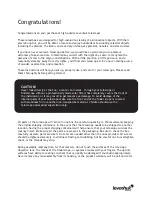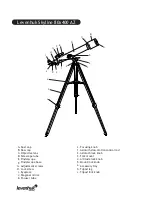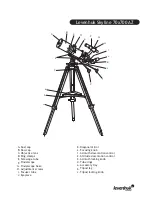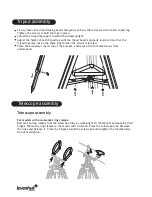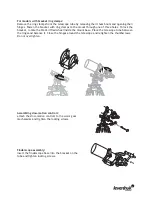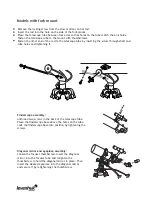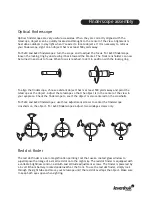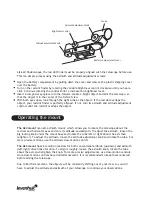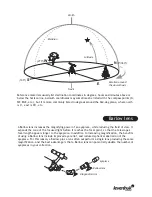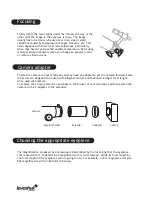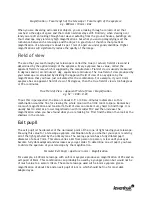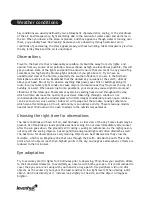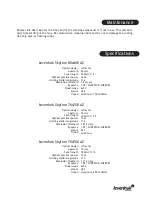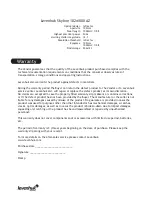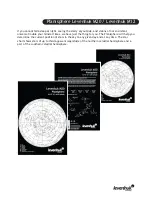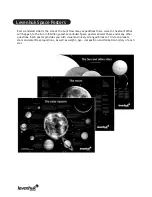
Magnification = Focal length of the telescope / Focal length of the eyepiece
e.g. 800mm / 10mm = 80x
When you are observing astronomical objects, you are looking through a column of air that
reaches to the edge of space and that column seldom stays still. Similarly, when viewing over
land you are often looking through heat waves radiating from the ground, houses, buildings, etc.
Your telescope may yield very high magnifications, but what you end up magnifying is all the
turbulence between the telescope and the object. A good rule of thumb is that practical
magnification of a telescope is about 2x per 1 mm of aperture under good conditions. Higher
magnifications will significantly reduce the quality of the image.
The area that you see through your telescope is called the true (or actual) field of view and is
determined by the optical design of the eyepiece. Every eyepiece has a value, called the
apparent field of view, which is supplied by the manufacturer. Field of view is usually measured
in degrees and/or arc-minutes (1 deg. equals 60 arc-minutes). The true field of view produced by
your telescope is calculated by dividing the apparent field of view of an eyepiece by the
magnification that you have just calculated for the combination. For example, if your 10 mm
eyepiece has an apparent field of view of 52 degrees, then the true field of view is 0.65 degrees
or 39 arc-minutes.
True Field of View = Apparent Field of View / Magnification
e.g. 52° / 80X = 0.65°
To put this in perspective, the Moon is about 0.5° or 30 arc-minutes in diameter, so this
combination would be fine for viewing the whole moon with a little room to spare. Remember,
too much magnification and too small a field of view can make it very hard to find things. It is
usually best to start at a lower magnification with its wider FOV and then increase the
magnification when you have found what you are looking for. First find the Moon then look at the
shadows in the craters.
The exit pupil is the diameter of the narrowest point of the cone of light leaving your telescope.
Knowing this value for a telescope-eyepiece combination tells you whether your eye is receiving
all of the light gathered by the primary lens. The average person has a fully dilated pupil
diameter of about 7 mm. This value varies a bit from person to person, is less until your eyes
become fully dark adapted and decreases as you get older. To determine an exit pupil, you have
to divide the aperture of your telescope by the magnification.
Formula: Exit Pupil = Aperture in mm / Magnification
For example, a 200 mm telescope with an 8 mm eyepiece produces a magnification of 25x and an
exit pupil of 8mm. This combination can probably be used by a younger person but would not be
of much value to a senior citizen. The same telescope used with a 6 mm eyepiece gives a
magnification of about 33x and an exit pupil of 6 mm, which should be fine for most dark
adapted eyes.
Field of view
Exit pupil


